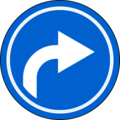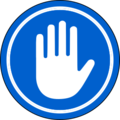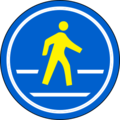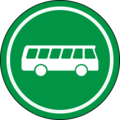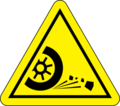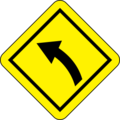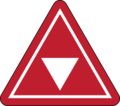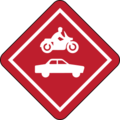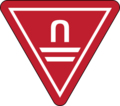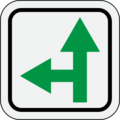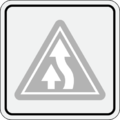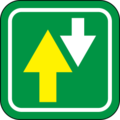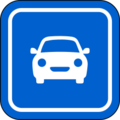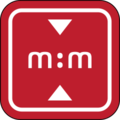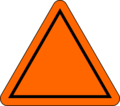Uniform Traffic Sign Protocol
The Uniform Traffic Sign Protocol, often abbreviated to UTSP, is a multi-lateral treaty intended to increase road safety and aid cross-border road travel by standardising international road signaling systems.
The UTSP was first agreed upon by the Bosato Treaty Organisation in 1959, primarily by nations belonging to the Kuulist Bloc and CEPS. As such, it was mostly based upon a consensus on traffic signs that had been evolving in Western Ekuosia since the 1930s. Despite the growth of the BTO into the International Congress, and multiple updates to the Protocol since its inception, at present full compliance with the UTSP is mostly limited to road networks in Ekuosia, Akulanen, and Soltenna.
Principles
The UTSP establishes three basic types of traffic sign:
- Affirmative signs - circular
- Negative signs - triangular or diamond-shaped
- Informative signs - square or rectangular
These basic shapes of sign are then further subdivided by their background colour, with the following basic connotations:
- White - information
- Red - restriction
- Blue - instruction, or parking
- Green - exclusivity, or priority
- Yellow - warning
- Orange - temporary signals
The UTCP prescribes white as the general foreground colour, except on orange, yellow, or white backgrounds, where black or dark blue is required. Yellow, blue, or green may be used in the foreground to indicate emphasis depending on background.
Information on traffic signs should always be conveyed through pictograms or numbers. Text may only be used sparingly to clarify a sign or provide additional information.
Traffic signs
Affirmative signs
Affirmative signs have a circular shape. This category contains the smallest number of signs, but they are very commonly found on road networks.
By far the most frequent subcategory is blue-coloured "mandatory signs", which convey a mandatory instruction to road users. This subcategory is used for both conveying mandatory directions of travel, as well for indicating when drivers must yield the right of way.
The second subcategory of affirmative signs is green-coloured "exclusivity signs". These signs indicate when a lane, road or zone is only for the use of a particular type of vehicle, such as a bicycle path or bus lane.
Negative signs
Signs in this category may be either triangular, or diamond-shaped, depending on jurisdiction. They encompass three common types of sign: warnings, prohibitions, and speed limits.
Warning signs are yellow, with black foreground. Their purpose is to warn drivers of dangers and hazards, such as other road users, poor conditions, or sudden changes in direction ahead.
Red signs with a white foreground are used to indicate prohibitions. Pictograms on these signs depict specific actions or vehicles which are prohibited ahead. This category of sign sometimes causes confusion for drivers who are unused to UTSP-style signs, as they do not include any form of cross or slash to clarify that what they are depicting is prohibited.
Speed limit signs are classed as a subtype of prohibition signs, as they prohibit the driver from exceeding a certain speed. However, in countries using triangular negative signs, speed limit signs are distinguished from other prohibition signs as the triangle is upside-down. Due to the space constraint of the triangular shape, the digits of the given speed are stacked on top of each other.
Informative signs
This category of signs are square or rectangular. They are the most versatile category, and can be used for any situation where a regular driver is not legally required to alter their driving.
Most commonly, informative signs employ a neutral white background. These signs can give the driver information about road layout, junctions, lane destinations, permitted directions of travel, mergers without priority, and cancellation of prohibitions.
Informative signs may also have a green background. These signs inform drivers of situations where they have priority over adjoining traffic, for instance at T-junctions or on priority routes.
Signs with blue background indicate areas intended for parked vehicles.
With red backgrounds, these signs indicate practical restrictions on vehicle weight, height, width or length due to constraints of the road.
Temporary signs
These signs follow the same shapes as signs above, but are coloured orange to indicate that the signs are temporary (most commonly due to roadworks or an accident).
Direction signs
Direction signs are not regulated by the UTSP, and thus there are significant differences in colours and symbolism between countries.
